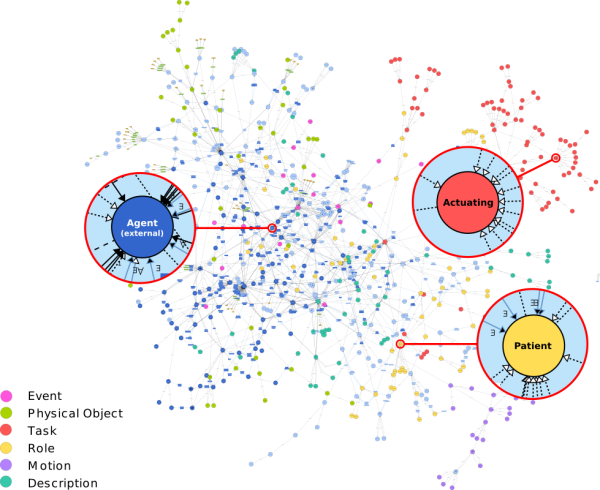Ontologies
KnowRob has been employing ontologies in order to conceptualize the world in which the robot acts since more then a decade. In the early days, KnowRob's knowledge modeling was inspired by definitions in Cyc. More recently, and as a consequence of working closely with linguistic researchers in CRC EASE, KnowRob's knowledge modeling was revised. The most fundamental change is that KnowRob's knowledge modeling was aligned to and derived from more abstract concepts defined in a carefully designed foundational ontology. KnowRob employs the DUL foundational ontology which is a slim version of the Descriptive Ontology for Linguistic and Cognitive Engineering (DOLCE). DUL and DOLCE have a clear cognitive bias, and are both well established in the knowledge engineering community.
As a foundational ontology, however, DUL does not define very specific concepts such as fork or dish. However, these concepts are needed for our robots that do everyday activities. SOMA is an ontological model, developped in CRC EASE, that attempts to equip robotic agents with abstract knowledge to enable them performing activities in a more flexible and robust manner. The main focus of SOMA is the characterization of physical and social activity context, as well as the motions carried out by agents, and the interactions caused by them. SOMA is continuously deployed here, and can be loaded with common ontology tools.
Finally, ontologies maintained as part of KnowRob are thought to be specifically for the robot usecase. For example, a concept “fork” would not be defined in these ontologies, but concepts such as “sensor” or “robot control system” would belong in these ontologies.
Legacy Ontologies
There are a couple of ontologies once developed for KnowRob that are not supported or used anymore for some reason. For reference, we keep these files in a collection of legacy ontologies.
